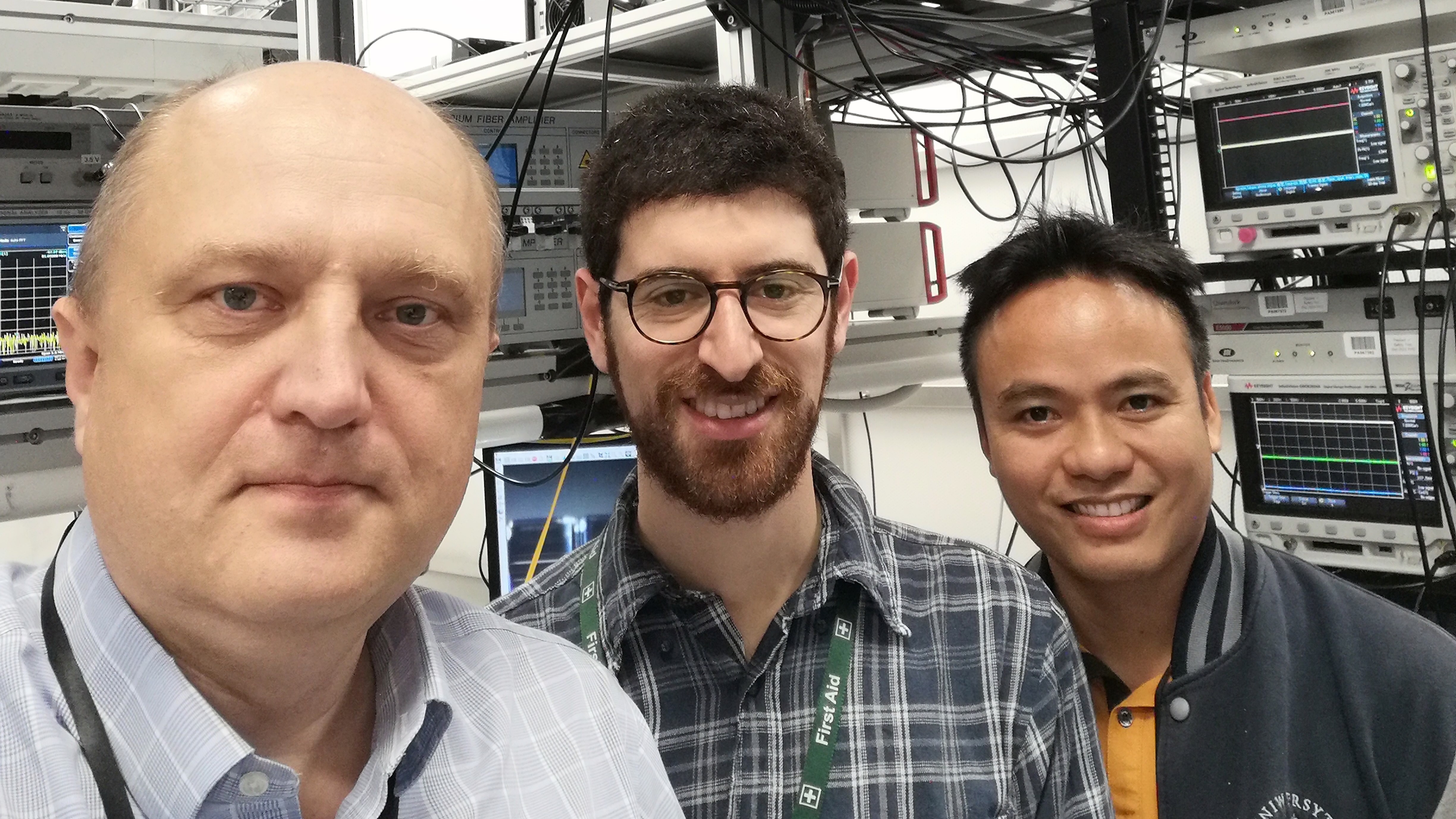The Royal Society has made two awards to the Department of Physics to support work alongside the National Physical Laboratory (NPL) and the Department of Chemistry at the University of Helsinki.
The funding will enable the team to explore the development of different sources of optical frequency combs. These are evenly-spaced, specialised lasers that act like a ruler and can quickly and accurately measure exact frequencies of light - from infrared all the way to ultraviolet. Optical frequency combs can be used to develop optical clocks, replace the multiple lasers in data transmission systems, and sense different gases including common pollutants.
Funding for the Bath-NPL project comes from the Short Industry Fellowship scheme, while the Bath-Helsinki project is supported by the International Exchanges scheme.
Professor Dmitry Skryabin, from the Department of Physics, explained: “We have developed quite an advanced model and computational tools, which recently were published in the prestigious Optica and Nature Communications, and it is critically important to apply these tools for practical problems in collaboration with NPL, Helsinki University and our other international and UK colleagues. The area of frequency combs continues to grow globally. The UK’s Science and Technology Framework and the University of Bath define the digital economy as one of the areas critical for investment and development, where optical technology and frequency combs play a notable role.”
Dr Tamaryn Shean and Dr Jonathan Silver from NPL said: “The Time and Frequency Department at NPL is to develop future timing technologies, including optical atomic clocks, that will contribute to the redefinition of the second in the coming years.
"An essential component of all-optical clocks is a self-referenced frequency comb that allows the optical atomic reference to be divided down to a microwave frequency that can be counted electronically. Currently, available frequency combs based on mode-locked lasers are bulky and expensive, making them unsuitable for portable applications. A particularly promising route to miniaturising frequency comb technology is the microresonator-based frequency comb or microcomb. Two of the most challenging aspects are the generation of an octave-spanning comb using the limited optical power available with an integrated laser and linking the two ends of the octave through a second-order-nonlinear process such as second harmonic generation.
"We are very excited about this opportunity to have Prof Skryabin and the wider Bath team work with us and apply Bath’s pioneering modelling capabilities to describe the octave and multioctave comb generation and design resonators suitable for self-referencing.”
Dr Markku Vainio from Helsinki noted: “It is great to have Royal Society funding to support my informal contacts with Bath so far. The Bath and Helsinki teams plan to work together on the frequency comb spectroscopy in waveguides with second-order nonlinearity. The Helsinki group is one of the pioneers in frequency comb generation in the IR and mid-IR domains using nonlinear crystals with second-order (chi-2) nonlinearity and their applications for laser spectroscopy and microscopy. The Bath group is one of the current leaders in the modelling and interpretation of chi-2 combs, which we need to test the chemical composition of unknown samples, whether they are gas, liquid or solid.”

